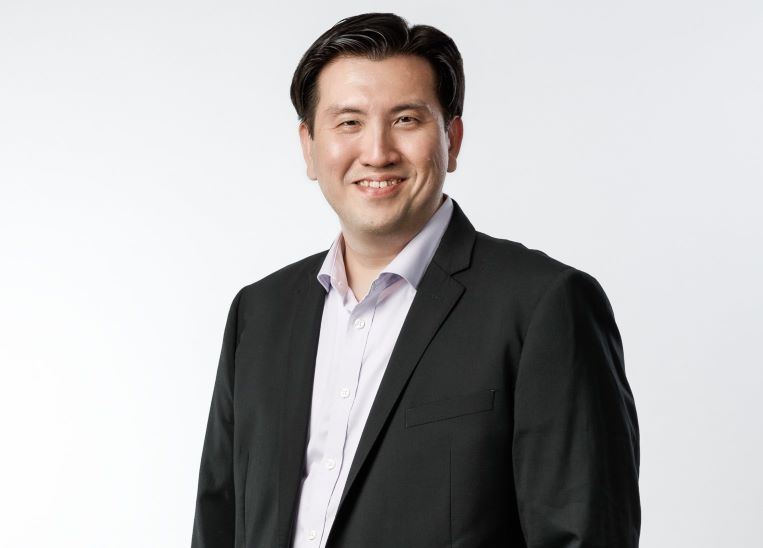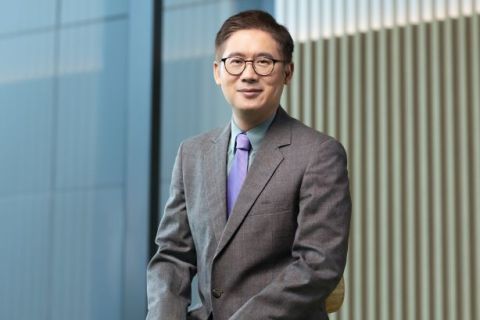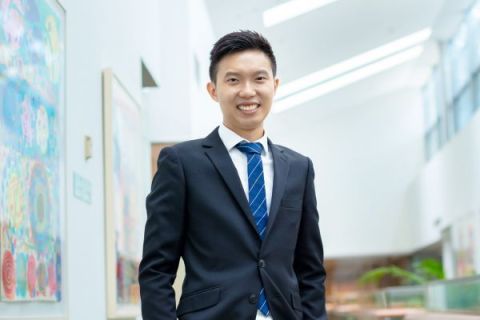
By Alvin Lee
SMU Office of Research – SMU’s commitment to real-world impact is described aptly by the headline on the university’s ‘Partnerships’ webpage: ‘Powering Partnerships for a Better Tomorrow.’ Below this headline, the ‘how’ is articulated: ‘We forge alliance across people, public, and private sectors to co-create solutions that reimagine education, grow businesses, and nurture communities.’
“The key thing about industry partnerships, and also government partnerships, is that you must first understand what matters to them,” observes Dr. Cheong Wei Yang, Vice Provost for Strategic Research Partnerships. “You must understand what outcomes and deliverables they might be looking for and fit these into what works in a research setting.”
Among companies, SMU has partnered global heavyweights such as Amazon Web Services and SMEs such as Singapore-based logistics firm uParcel. The university’s focus on interdisciplinary research helps address challenges for an increasingly connected and complex world.
“As long as the companies come in with a strategic perspective of what this research partnership would potentially help them to achieve in the long run, it will be a lot more productive. If they come in looking for short-term outcomes, it would be better for them to hire a consultancy firm.
“I think most industry partners are keen to work with universities whom they perceive to be more forward looking or holistic, and are able to see angles that they themselves are not able to see due to their limited vista,” Dr. Cheong tells the Office of Research. “Companies, by their nature, are organised to be profit-making to make sure they remain going concerns in the here and now.”
“But companies want to have good employees, for whom the purpose of the work is important. Good pay matters no doubt, but the purpose of the work is typically what matters most when it comes to retention. It is sometimes a bit difficult for a company to define that purpose on its own. This is where partnerships with universities can stretch the horizon for the company and allow its best employees to challenge themselves to define the strategic future of their company.”
The space and time for learning and experimentation afforded to universities can help private enterprise address such matters in addition to the typical operational and financial issues that they tend to think of. This feature of higher education can also indirectly serve governments. Whereas many governments worldwide are constrained by short-term electoral cycles and the pressure to win votes, more stable governments can make long-term plans. These plans, if formed in ideation and research partnership with universities, can then be trialed by universities which are not obliged to continue any such schemes which are cost-ineffective even if they prove to be popular; that is a luxury sometimes not afforded to governments.
“For governments, if you've done something before, you would find it very difficult to then say, ‘I won't do it again.’ A possible response to that might be, ‘Why not? Why did you favour these other people but not us?’ That fear of the inconvenience of precedence sometimes restricts the innovativeness of government,” Dr. Cheong points out. “The question is: ‘Are there things that we don't need the government to do, but we as a university can trial and show whether it works or doesn't work?’ If it is indeed successful, the government can then point to the trial and the results as reasons for why they will adopt it.”
“Again, it’s about understanding the characteristics of our partners, what moves them, what they fear, what they actually really appreciate, and then finding our value proposition in that process and forming synergistic partnerships that are ultimately beneficial for both sides.”
Making a difference in research with data
Dr. Cheong pointed out Boston University’s CHASS (Computational Humanities, Arts, and Social Sciences) initiative as an example of the capabilities SMU has also been building, based on the earlier work by the Living Analytics Research Centre (LARC, in collaboration with Carnegie Mellon University [CMU] that was established in 2011). CHASS was launched in 2023 by BU’s Faculty of Computing and Data Sciences (CDS) to, among other things, ‘understand the ways that this ever-expanding toolkit can advance the native goals of the humanities, arts, and social-science disciplines.’ The CDS operates as a “horizontal” faculty that works with all the schools in BU, similar to how the School of Computing and Information Systems in SMU is striving to support the digital, data, and information systems analytical needs of the other schools in SMU.
“The key thing to keep in mind is the larger context of increasing digitalisation across the entire world that we live, work and play in, and that everything within digitalisation is a huge corpus of data in various forms,” explains Dr. Cheong, pointing out data in, but not limited to, textual, audio, visual and numerical forms. Because SMU’s eight schools produce and work with information and data outside of the physical and biological science disciplines, there is a greater focus on textual data.
“For example, we look at advertisements and what people are actually saying on social media,” says Dr. Cheong. “What are politicians saying? What are different governments saying and so on. All this textual data (including audio and video converted to text) lets us have some quantitative sense of what's happening, whether the strength of what we're observing is increasing, or if there are trends that we also need to monitor. Underlying that mode of thinking is what we begin to consider as computational social science.”
He adds: “If we do it well, it becomes a calling card for what SMU stands for, because you don’t find as many data scientists working in social science research. You don't normally think of textual information as computable. It's not yet prevalent and pervasive, and hence it's an opportunity for SMU to make use of the unique characteristics that we do have. We have faculty who do research in text-related work, but we also have a strong School of Computing and Information Systems that can then assist us in doing this work.”
“I think all the schools within SMU must understand how we can do computational social science and give ourselves an edge in our research in these traditionally less computationally-intensive disciplines, and to make sure that we continue to be relevant as a university as we come to grips with the digital revolution – economically, socially and individually. More importantly, it makes it more tractable for different disciplines to work together in interdisciplinary ways to tackle the grand challenges facing our societies today, because we are able to work off the same data sets.”
The SMU Urban Institute, described as “an interface between theoretical and applied research, data science and the critical social sciences”, is an example of how SMU is integrating data science and information architectures into developing interdisciplinary research capabilities. With faculty from across the university representing each school at the university, the Urban Institute is well placed to develop and synthesise comprehensive and big-picture solutions from the holistic data generated by the urban landscape.
But the question remains: How can universities incentivise faculty to work on something that shows up outside the traditional assessment frame of academic journals and peer review panels?
“We debated some of these issues within the management of SMU: For example, is it really about doing multidisciplinary research? Or is it having a multidisciplinary perspective of the key issue at hand, and based on this shared understanding, research is then done to a high level of distinction by each discipline, but where the outcomes are then well-integrated to offer a holistic perspective because we have already earlier mapped out their implications to each other based on understanding of what we're trying to solve?”
“You could say that larger understanding of what's actually happening is also a form of research, but of course more importantly, it is a form of literature that can then be used for greater impact because that understanding can then be taught as a stream of logic and thinking explainable to the wider public, to stakeholders, to companies, to governments, to regulators and so on. That is how SMU will seek to achieve impact through the research that we do.”
He adds: “At the larger university level, there's also much discussion on making sure the incentives for faculty are comprehensive enough to encompass these types of work.”
“There are people who do pure research, and there are synthesisers. These could be people who also do very good research, but they could also simply be very engaged with industry or with government and understand the nature of the problems and challenges to be solved. Because of that understanding they are able to pull together the findings and maybe even motivate other areas of research that are important to the synthesis of a holistic understanding and solution.”
A regulatory Renaissance Man
If he were not co-ordinating this line of work in SMU, Dr. Cheong might well be such a synthesiser in research. As someone who did Chemical Engineering and Economics as an undergraduate at MIT, he proceeded to complete his Masters and PhD in the latter in Oxford. The former Chemistry Olympian went on to senior roles in the Singaporean government, gaining a keen understanding of policymaking and regulatory frameworks. Throw in regular consultation with private enterprise as part of his work in his many postings, and you get something akin to a Renaissance Man.
“I think my formal educational experience taught me a few truths,” reflects Dr. Cheong. “In the realm of engineering you are never a hundred percent sure. You factor in a 20 percent margin of error in everything you try to plan for and have to build, and you just say that, ‘Okay, within that we basically run tests and we adjust things as we go along.’ It’s all very practical as compared to the more theoretical approach in the sciences.
“As I got deeper into economics, I realised that it is people, not atoms, who are making decisions in the systems we really care about, and not everyone is always acting rationally. Trying to factor in both aspects of the engineering/computational disciplines as well as the economics/social science disciplines, including behavioural aspects, allowed me to see both sides of the same world from the lenses of two very different disciplinary approaches.”
He concludes: “I ended up working in the government for two decades and applying the economic principles, setting practical policies, and seeing how these things play out. I realise that many of these come with a certain behavioural aspect too, and many things depend on influencing people to believe that what you're trying to get them to do is actually good for them. This is a role that SMU must also be good at, if our research is to have a positive impact on the world we live in.”
Back to Research@SMU May 2024 Issue
Want to see more of SMU Research?
Sign up for Research@SMU e-newslettter to know more about our research and research-related events!
If you would like to remove yourself from all our mailing list, please visit https://eservices.smu.edu.sg/internet/DNC/Default.aspx

